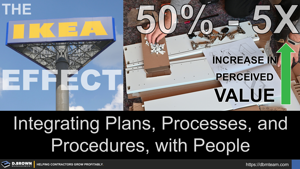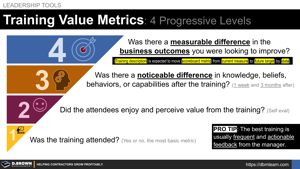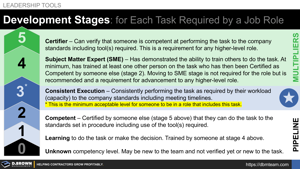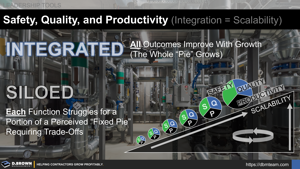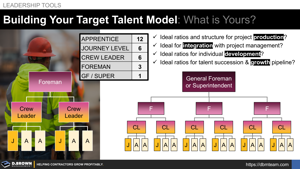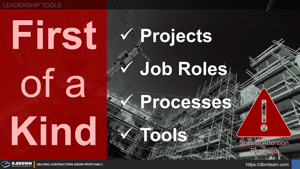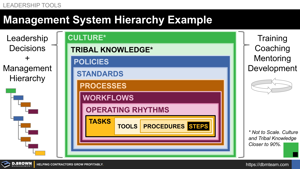The IKEA Effect for Contractors
The IKEA Effect goes far beyond kitting, prefab, and modularization in construction. The IKEA Effect is a cognitive bias that impacts how teams align and execute, from market strategy and business plans to processes, projects, and even succession.
leadership management productivityTraining Value Metrics: 4 Progressive Levels
In general, training adds value, but not all training is valuable. Understanding the different levels of measuring the results of training is the first step in building effective training.
management trainingDevelopment Stages for Each Task Required by a Job Role
You can accelerate someone’s development with a consistent method for evaluating their progress from learning to consistent execution. Your growth is further accelerated by those who develop into multipliers of others.
development management talentIntegrated Safety, Quality, and Production
Integrated safety, quality, and production improve all outcomes with growth. Silos force functions to fight over a “fixed pie,” driving trade-offs.
management production quality safetyFront-Line Job Role Progression (Leading Self)
Clarity around job role expectations, progression paths, timelines (min/max), and required resources is the foundation for building people, projects, and construction companies.
management Organizational Development talentBuilding Your Target Talent Model
Talent is the most constrained resource in the construction industry through at least 2030. With the industry's growth outlook, the contractors with the best Talent Value Streams (TVS) will dramatically outperform. Sadly, there will also be failures.
business planning management talentEmotional Intelligence: Building Inner Strength and Impact
Emotional intelligence competencies are the impact multiplier for your technical competencies. Daniel Goleman has spent his career focused on defining, evaluating, and building these capabilities.
emotional intelligence leadership managementDevelopment Progression (And Joy Level)
We’re all born with aptitudes waiting to be discovered or developed. From the start, we form preferences. How those preferences become strengths—and how we use them in life and business—shapes both our joy and competitiveness.
management talentFirst of a Kind: Managing to Accelerate Outcomes and Mitigate Risks
Special attention is required for all "First of a Kind" projects, job roles, processes, and tools. This is often overlooked, slowing down progress and creating unnecessary risks for contractors.
management riskManagement System Hierarchy Example
A management system has hierarchies from culture through to the individual steps in a procedure. These hierarchies must be integrated with strategic decisions, the organizational structure, and training to create a competitive advantage.
management